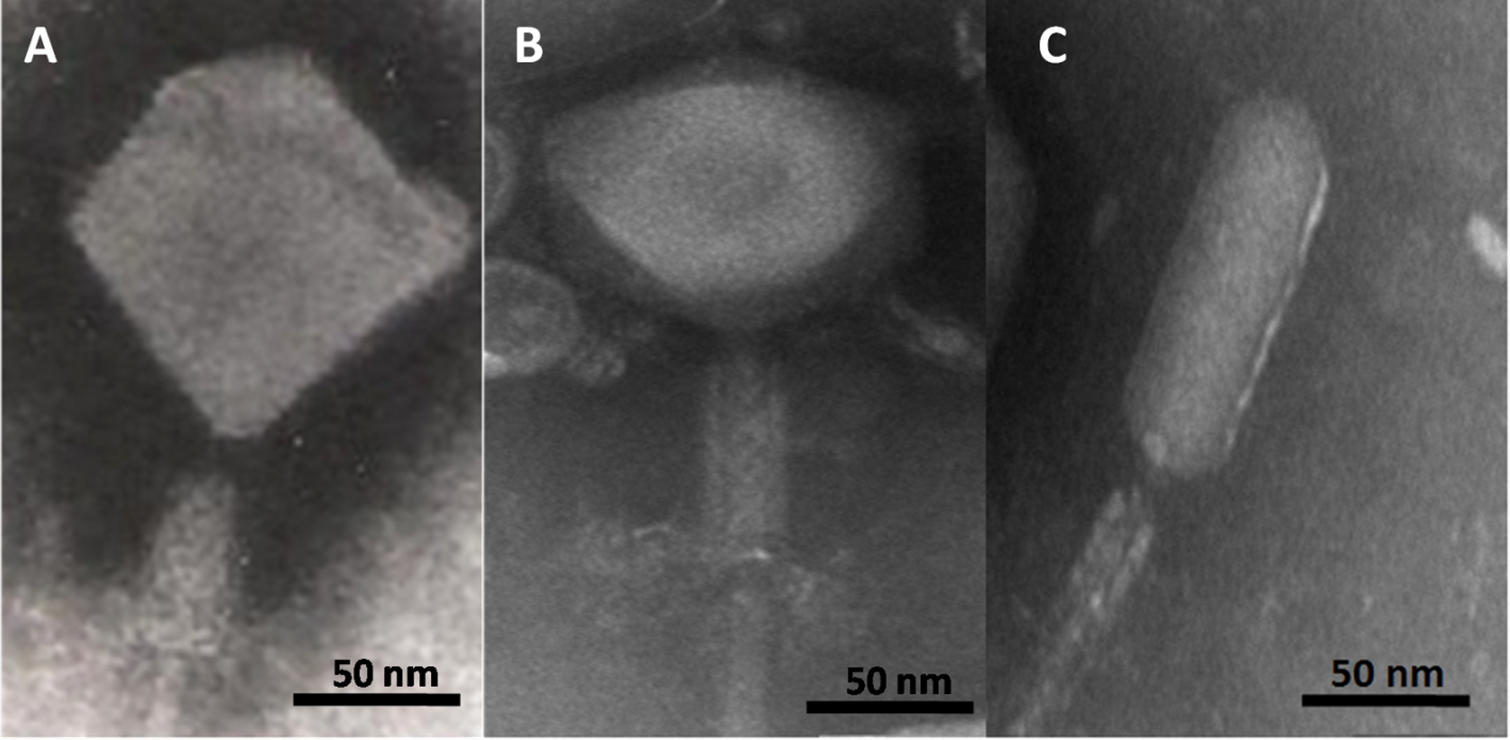VOLUME 13 (Supplement)

Philipp. Sci. Lett. 2020 13 (Supplement) 127-135
available online: November 30, 2020
*Corresponding author
Email Address: dmadcpapa@gmail.com
Date received: January 30, 2020
Date revised: November 14, 2020
Date accepted: November 20, 2020
ARTICLE
Bacteriophage-based biocontrol of Salmonella enterica ser. Enteritidis in selected ready-to-eat food
2Department of Biological Sciences, College of Science
3Research Center for Natural and Applied Sciences,
University of Santo Tomas, Manila
Salmonella sp. is one of the major causes of food-borne illnesses in the world, causing serious threat to human health. Innovations are constantly being explored to lessen the incidence of food-borne pathogens because the current approaches are still ineffective. One alternative solution to mitigate the problem is the use of bacteriophages. In this study, three phages A3CE, PF01, and, PF02 were partially characterized based on morphology, host range, and infectivity under different pH and temperature conditions. All three phages have contractile tails and belong to the Family Myoviridae. Results of phage stability assays showed that the three phages were able to retain infectivity at pH 5-9 and 30°C – 50°C and were able to infect a few other serotypes of Salmonella. All three phages were used to reduce Salmonella ser. Enteritidis in Ready to eat (RTE) food. Pepper pastrami, chicken ham, bologna, bean sprouts, and lettuce were spiked with Salmonella ser. Enteritidis (1 x 105 CFU/ml) and were treated with (a) Phage A3CE, (b) Phage PF01 and PF02 cocktail, (c) Phage A3CE, PF01, and PF02 cocktail at a multiplicity of infection (MOI) of 1000 and were incubated for 4 days at 4 and 25°C. Results showed that phage treatment resulted in a significant reduction of Salmonella ser. Enteritidis in RTE foods, with the phage cocktail (A3CE, PF01, and PF02) treatment showing up to 5 log reductions. Overall, the results of the study demonstrate the potential of virulent phages in controlling Salmonella in food.
© 2025 SciEnggJ
Philippine-American Academy of Science and Engineering